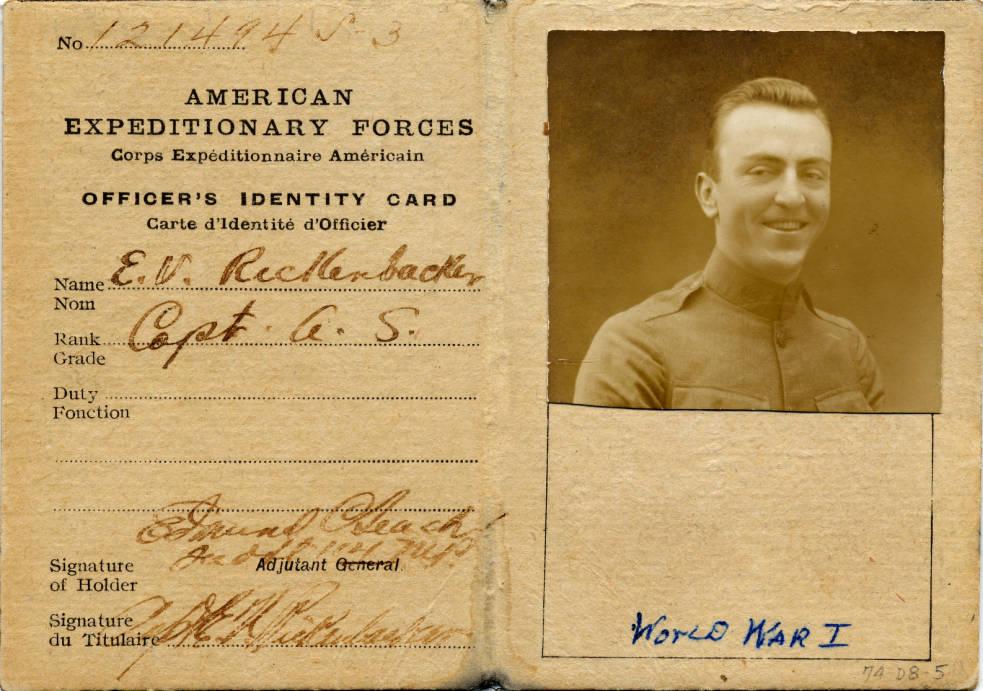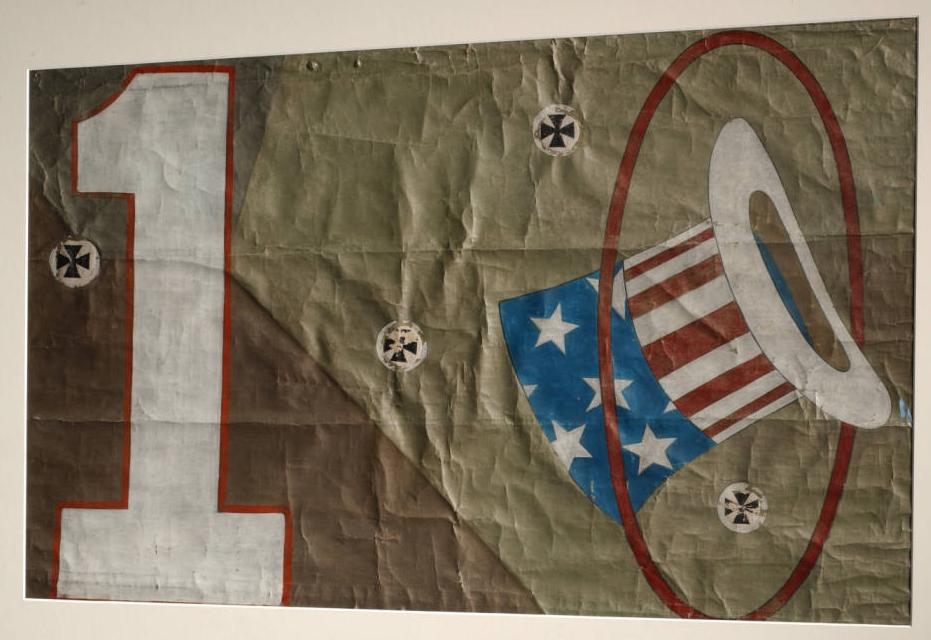The Ace of Aces

Many Ohioans know the name Edward “Eddie” Rickenbacker–our state’s own “Ace of Aces”–for his famous exploits as a member of the 94th Aero Squadron during World War I. In addition to his many other awards and medals, Rickenbacker was awarded the Medal of Honor, the highest military honor given by the government of the United States, for his heroic actions on today’s date in 1918.
Awarded November 6, 1930, his citation read:
Edward V. Rickenbacker, Colonel, specialist reserve, then first lieutenant, 94th Aero Squadron, Air Service, American Expeditionary Forces. For conspicuous gallantry and intrepidity above and beyond the call of duty in action against the enemy near Billy, France, September 25, 1918. While on a voluntary patrol over the lines Lt. Rickenbacker attacked seven enemy planes (five type Fokker protecting two type Halberstadt photographic planes). Disregarding the odds against him he dived on them and shot down one of the Fokkers out of control. He then attacked one of the Halberstadts and sent it down also.
This Columbus native, born to Swiss immigrants on October 8, 1890, first made a name for himself as a young man as one of the top race car drivers in the country. He raced for teams including Maxwell, Peugeot and Prest-O-Lite, soon earning himself the nickname “Fast Eddie.”

Upon U.S. entry into World War I in 1917, he enlisted in the Army and was originally offered a post as a driver among the staff of General John J. Pershing. Eventually he was able to secure a transfer to the United States Air Service and was sent to Tours, France, to learn to fly. He was assigned to the 94th Aero Squadron, one of the first American air squadrons to fight in German territory during World War I, and nicknamed thethe “Hat in the Ring Gang” after the phrase “throwing the hat into the ring” or getting involved in a conflict. Rickenbacker would go on to earn his place in history, credited with taking down 26 German aircraft in his six months on aerial duty, a record which would stand until World War II, and with a total of 300 combat hours in flight, supposedly more than any other U.S. pilot in the war.
After World War I, Rickenbacker left the military and became involved once again in the automobile industry, including a stint working for General Motors and the purchase of the Indianapolis Speedway. Eventually, Rickenbacker became president of Eastern Airlines, a long-time role during which his leadership, as well as his fame, helped to make the business one of the most successful commercial airlines in the mid-20th century.
Rickenbacker died while abroad in Switzerland on July 27, 1973, and is interred in Greenlawn Cemetery in Columbus. But in Ohio and beyond, the legend of this Ace of Aces lives on.
Thanks to Lily Birkhimer, Digital Projects Coordinator at the Ohio History Connection, for this week’s post!



Leave a Reply
You must be logged in to post a comment.